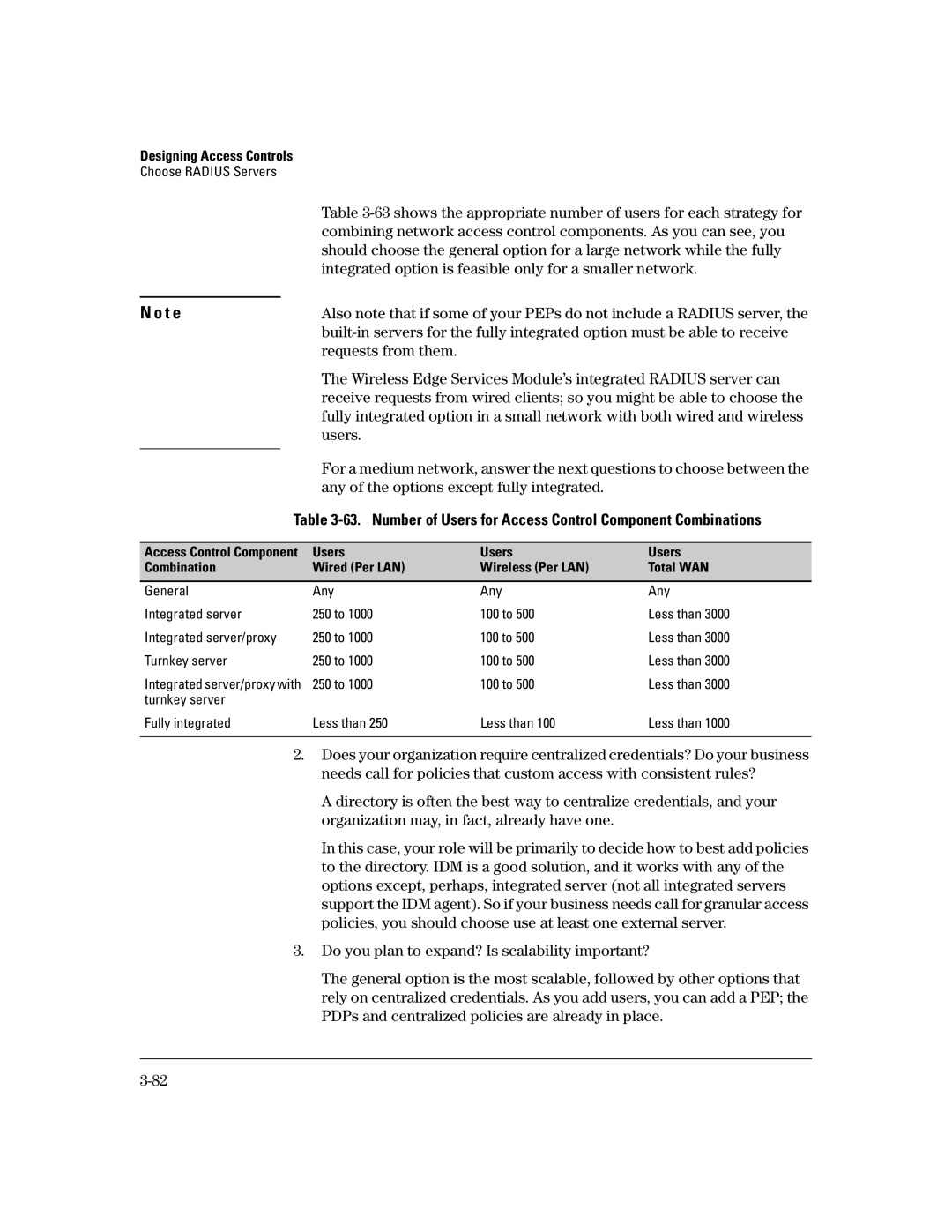
Designing Access Controls
Choose RADIUS Servers
Table
N o t e | Also note that if some of your PEPs do not include a RADIUS server, the |
| |
| requests from them. |
| The Wireless Edge Services Module’s integrated RADIUS server can |
| receive requests from wired clients; so you might be able to choose the |
| fully integrated option in a small network with both wired and wireless |
| users. |
|
|
For a medium network, answer the next questions to choose between the any of the options except fully integrated.
Table
Access Control Component | Users | Users | Users |
Combination | Wired (Per LAN) | Wireless (Per LAN) | Total WAN |
|
|
|
|
General | Any | Any | Any |
Integrated server | 250 to 1000 | 100 to 500 | Less than 3000 |
Integrated server/proxy | 250 to 1000 | 100 to 500 | Less than 3000 |
Turnkey server | 250 to 1000 | 100 to 500 | Less than 3000 |
Integrated server/proxy with | 250 to 1000 | 100 to 500 | Less than 3000 |
turnkey server |
|
|
|
Fully integrated | Less than 250 | Less than 100 | Less than 1000 |
|
|
|
|
2.Does your organization require centralized credentials? Do your business needs call for policies that custom access with consistent rules?
A directory is often the best way to centralize credentials, and your organization may, in fact, already have one.
In this case, your role will be primarily to decide how to best add policies to the directory. IDM is a good solution, and it works with any of the options except, perhaps, integrated server (not all integrated servers support the IDM agent). So if your business needs call for granular access policies, you should choose use at least one external server.
3.Do you plan to expand? Is scalability important?
The general option is the most scalable, followed by other options that rely on centralized credentials. As you add users, you can add a PEP; the PDPs and centralized policies are already in place.
